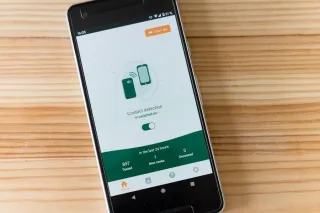THE GROWTH STRATEGIST VAULT
Insights to Turn Automation into Advantage
Learn how to identify inefficiencies, map opportunities, and design
AI solutions that deliver measurable returns.
Think Like a Strategist. Build Like a Pro

AI integration in professional services: Stop Falling Behind
AI integration in professional services: Stop Falling Behind ...more
Strategic Growth
October 16, 2025•10 min read

Integrating Ai for professional services: Unlock New Growth
Integrating Ai for professional services: Unlock New Growth ...more
Strategic Growth
October 15, 2025•14 min read

Discover artificial intelligence for business Success Today
Discover artificial intelligence for business Success Today ...more
Strategic Growth
October 06, 2025•15 min read

AI-driven service automation: Transform Your Workflow Now
AI-driven service automation: Transform Your Workflow Now ...more
Strategic Growth
September 30, 2025•9 min read

10 Proven Business Growth Strategies to Skyrocket Your Success
10 Proven Business Growth Strategies to Skyrocket Your Success ...more
Strategic Growth
September 30, 2025•6 min read

Unlock machine learning in professional services
Unlock machine learning in professional services ...more
Strategic Growth
September 23, 2025•15 min read

From Data to Decisions: How AI is Revolutionizing Business Strategy
From Data to Decisions: How AI is Revolutionizing Business Strategy ...more
Strategic Growth
September 23, 2025•10 min read

From Vision to Reality: How Strategic Growth Planning Can Turn Your Business Goals into Achievable Milestones
From Vision to Reality: How Strategic Growth Planning Can Turn Your Business Goals into Achievable Milestones ...more
Strategic Growth
September 16, 2025•13 min read

From Manual to Automated: Transforming Your Business with Process Automation
From Manual to Automated: Transforming Your Business with Process Automation ...more
Strategic Growth
September 09, 2025•8 min read

Unleash the Power of Systemization: The Key to Sustainable Business Growth
Unleash the Power of Systemization: The Key to Sustainable Business Growth ...more
Strategic Growth
September 02, 2025•6 min read

The Ultimate Guide to Building a Strong Brand Identity: Tips and Tricks for Success
The Ultimate Guide to Building a Strong Brand Identity: Tips and Tricks for Success ...more
Strategic Growth
August 26, 2025•6 min read

Customer Loyalty 101: Essential Strategies Every Business Should Know
Customer Loyalty 101: Essential Strategies Every Business Should Know ...more
Strategic Growth
August 19, 2025•8 min read
Advice and answers from our team.
Asked Questions (FAQ's)
What is an AI Opportunity Audit?
An AI Opportunity Audit is a two-week process where we analyze your workflows, identify inefficiencies, and reveal automation opportunities that can save time, reduce costs, and unlock new revenue streams.
Who is this service for?
Our consulting is tailored for professional services providers, like Financial Advisory firms, Tax Advisory firms, Real Estate Brokerages, & Commercial Services firms who want to scale faster, reduce repetitive work, and get clarity on where AI can bring the biggest impact.
Do you implement the recommended solutions after our AI Opportunity Audit?
Yes. After the audit, we provide a clear implementation roadmap. We can either support your team in executing it or manage the full automation build for you.
Can you prove my ROI
Yes! We use a simple but powerful ROI model that translates hours saved into annual cost savings and potential revenue gains. You'll see the numbers before making any investment.
How long does it take to see results after our AI Opportunity Audit?
We combine deep technical expertise (n8n Ambassador, full-stack development) with hands-on Project Management experience building and integrating automations for agencies and firms worldwide. No fluff—just results.
Are You Ready To
Transform Your Business?
3 Tools to Clarify Your ROI

Workbook:
Identify bottlenecks in your current processes.

Calculator:
Quantify savings and measure ROI in minutes.

Canvas:
Visualize opportunities and the path to reach them
Much more than workflows, you get clear proven data. You'll see how every recommendation is backed by measurable ROI so you know exactly why it matters, and how to get there.
0% Risk | 100% Value

We focus on the relationships
As Much As The Results
"I'm facing some things that I'm too busy to
face, but I need to face them!"
Jade N.

"Within 5 minutes of talking with Joseph you will have that confidence that you're wanting."
Mark J.


1st Shield Financial
"His knowledge and client-focused approach demonstratively delivered excellence for outstanding results."
Kim B.


360 Property Group
"He is a valuable asset for any team, he embodies the qualities of a dedicated and caring professional. I surely look forward to doing more work with him in the future!"
Mack H.

"You've done everything you said...
You instill confidence in me"
Marco B.

"It feels personal. It doesn't feel like we're
just another client"
Michael H.


Gold Harvest Group
"Working with Joseph was a breath of fresh air into the noise of marketing. He asked great questions to really get to know who I am and what my business does."
Roman L.


Symmetry Financial
I now have a team that is setting appointments for me and getting great traction to my website."
Shonda S.


Innovation
Fresh, creative solutions.

Integrity
Honesty and transparency.

Excellence
Top-notch services.
FOLLOW US
Copyright 2025. J.W. Crawford Management. All Rights Reserved.
